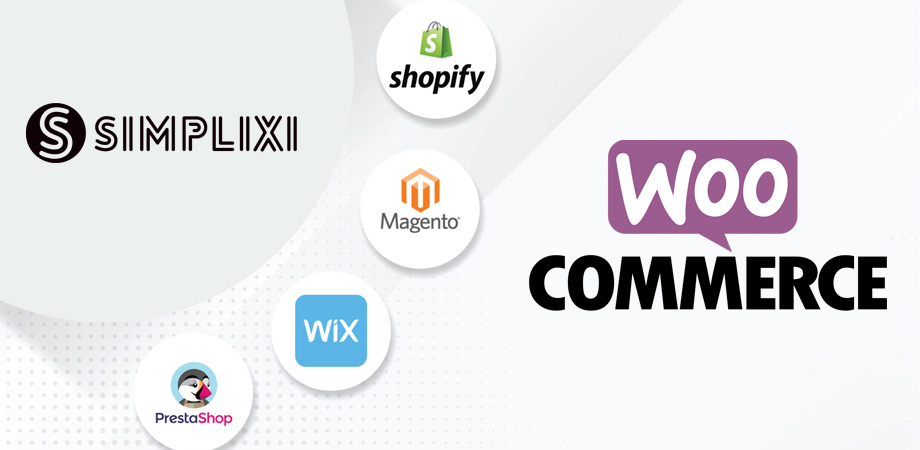Every successful business needs a website, and this is true for eCommerce sites as well. There are plenty of factors that can affect the success of your ecommerce site such as design, navigation, and performance. But there are 20 rules that every successful eCommerce website should follow.
This article is a comprehensive, no-holds-barred guide to the top 20 features that will make your eCommerce site a huge success.
Table of Contents
- 1. Analytics
- 2. Content management features
- 3. Inventory & stock management
- 4. Catalog management
- 5. Email templates
- 6. Data migration and import functionality
- 7. Advanced search and filtering
- 8. Speed and support for scalability
- 9. Custom reports (sales, stock, etc.)
- 10. Promotion and discount functionality
- 11. Multiple payment options
- 12. Customer communication channels
- 13. Automated backups and recovery
- 14. Strong security
- 15. Dynamic shopping cart
- 16. Easy navigation to checkout
- 17. SEO friendly
- 18. Third-party API integrations
- 19. Best practices for (UX) and (UI)
- 20. Cross-browser compatibility
- Final thoughts
1. Analytics
What are analytics for eCommerce?
Ecommerce analytics is a way to track data from many aspects of your business and use it to drive growth by making the right choices. You can track changes in customer behavior by looking at what they buy or how they engage with your content. You can then adjust your products, services & marketing to better suit their needs.
This includes metrics about what they looked at, the time they spent on it, and if they then went on to buy or sign up for your mailing list which helps you better understand which parts of your website are doing well and which need attention. One of the most used tools is Google Analytics.
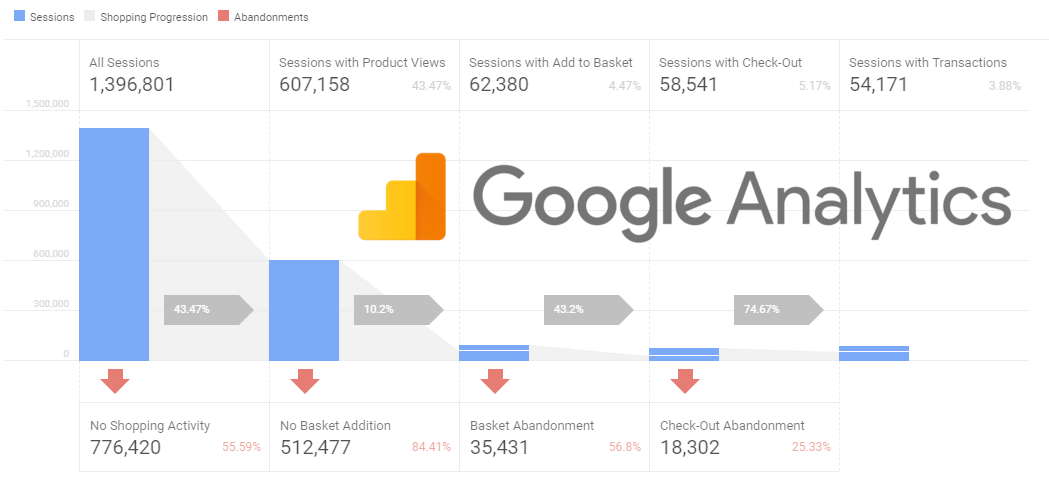
The importance of analytics for eCommerce
So, you have an eCommerce store. You’re doing everything right. You’ve followed the steps to make your site easy to use and attractive. But you should be measuring how successful it is for your customers. This is where analytics come in handy.
Analytics is an important component of the digital marketing landscape. It can help you identify what’s working and what isn’t, so that you can improve or fix those points.
2. Content management features
A Content Management System, or CMS are the backbone of sites that want great content and minimal maintenance, the CMS handles several types of content including:
- Page layouts
- Product descriptions
- Promotional elements
- Shipping and payment
- Transactional and marketing emails
The must-have features for an eCommerce CMS are:
- Features for SEO
- Features to optimize the user experience (UX)
- Features to optimize marketing & sales
- Features for analytics & reports
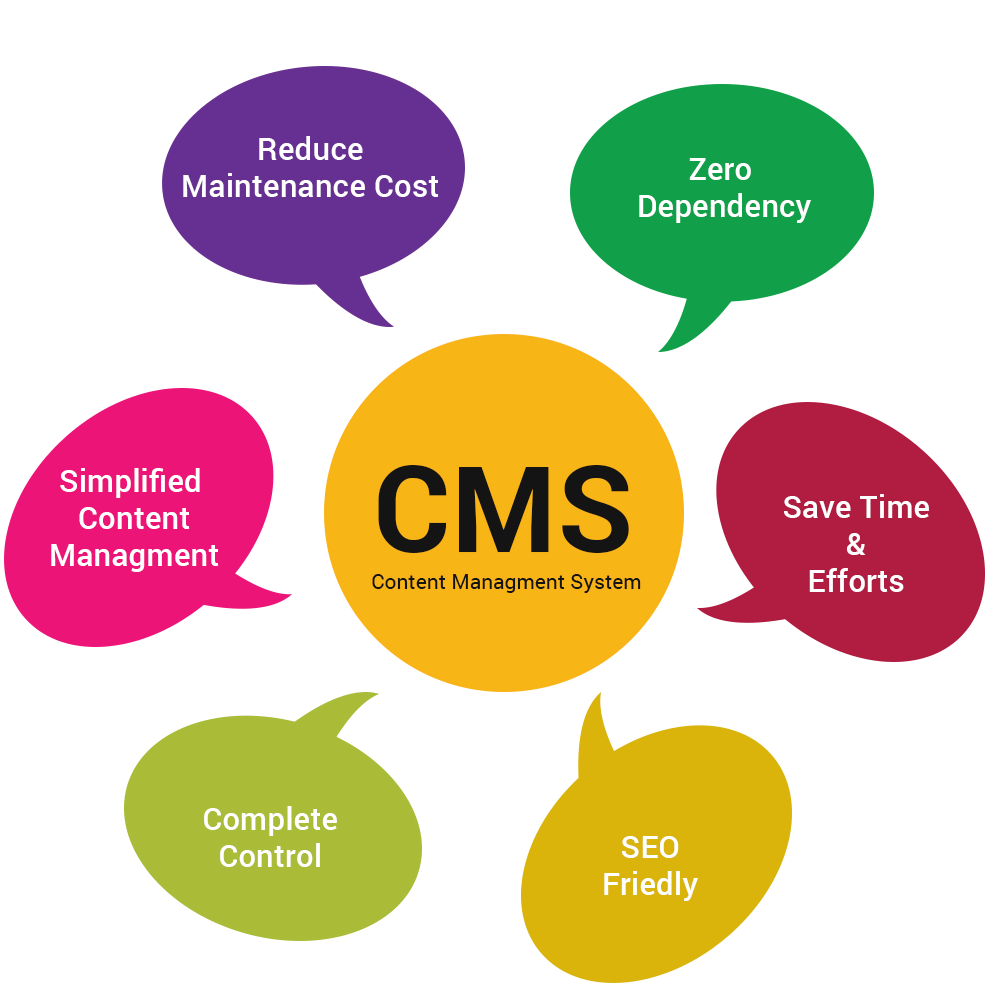
Top eCommerce systems with CMS functionality
3. Inventory & stock management
What is inventory and stock management for eCommerce?
If you do eCommerce businesses, you should know about stock management. It’s an important function that helps monitor products that are needed to be restocked/replaced. And if your business has many products, it can get hard to monitor which ones need to be replenished.
A stock management process works on the premise that stocks are finite resources that need to be monitored and controlled with precision to avoid waste or shortages. This will allow you to respond to a shortage of stocks with planning ahead. You can buy more from the supplier, find alternative suppliers, or order large quantities to ensure it doesn’t run out.
With the help of an inventory management system, you can quickly update prices on your store’s online store without having to manually track everything. This can also reduce turnaround time when it comes to orders and allows you to provide more convenience for customers with one download.
4. Catalog management
What Is eCommerce catalog management?
Catalog management is the business of managing the life cycle of an eCommerce catalog. This includes adding new products, updating product information, and maintaining inventory levels.
When people are browsing online, they often want to know exactly what they’re buying. So having accurate product descriptions is crucial. If your product comes in different styles, patterns etc., this should be clear to avoid any confusion, make sure you include these details on an individual page for each item.
5. Email templates
Ecommerce email templates are created solely for one goal: driving sales. A well-designed template can make all the difference to your clientele when it comes to email marketing. Send out this type of email to promote products, sales or company updates. The trick with sending them is to make them look professional & be sure their content is relevant.

Using a template will help save time by ensuring all graphics are high quality.
6. Data migration and import functionality
In an effort to better manage an eCommerce business, it is important to track everything from inventory management to customer data. This can become a tedious task when the system’s data is not properly organized. Data migration and import functions allow you to keep all of your information in one place, while still ensuring that the data is accurate and up-to-date.
7. Advanced search and filtering
Let’s be honest – eCommerce search is not easy. You should know that a simple integration will not do a good job. If you want to create positive shopping experiences that result in significant profits, it’s not enough to have a generic keyword-based search engine with simple features.
Modern eCommerce search is more than just searching a website’s catalog. It includes features such as navigation, intelligent autocomplete suggestions, NLP, and custom stemming algorithms. Additionally, it should also come with smart ranking algorithms that are influenced by AI & ML for continually studying your users’ needs and to automate the process.
And that’s not the end, in addition to great features and technologies, a modern eCommerce search solution needs to be continually worked on. It’s not enough to integrate a search engine – once you stop improving it, the quality will drop.
Why Is eCommerce search so important?
A successful digital commerce business features several new and technological aspects, not least of all on-site search. For a thriving eCommerce site, don’t neglect the importance of this already-available aspect of your website. Sure any new technologies or new features are great, but customers need to see the value they bring. Online search is a growing opportunity for increasing revenue.
It can be tough to make a decision, but we highly recommend you analyze before making a choice. In any decision-making process, it’s important to examine data. In online retail, Google Analytics data is usually the most important thing to have at hand.”
- It saves you tons of money by helping your users find what they’re looking for.
- Make better business decisions with insights about your users’ needs and preferences.
10 top best practices for search on eCommerce sites
- Make the search box easy to spot and available for use
- Place text in search box to encourage starting more searches
- Make the search box big enough for longer queries
- Place a search box on each page that includes your items
- Strong error tolerance for an uninterrupted user journey
- Search query autocomplete and AJAX will help a lot
- Allow visitors to search within particular categories
- Comprehensive analytics and reporting for optimization
- Focus on mobile search to turn viewers into buyers
- Natural Language Processing (NLP) for better results
8. Speed and support for scalability
There are a lot of factors to think about when choosing an e-commerce platform but these two seem to be the most important ones: speed and scalability. A fast online experience is vital for getting more customers and you need to be able to scale your site effortlessly.
Slowing down your website can have a negative impact on your business if not dealt with. When this happens, not only will customer frustration increase, but conversion rates and revenue will also take a hit.
Does your platform scale?
You should be thinking about how your e-commerce platform will scale in the next few years. This will allow you to make changes as needed before they are too expensive
Make sure you’re prepared for the future when you’re choosing an online store. Remember to look ahead and consider how your platform will develop in the coming years. If your eCommerce site also grows year on year then it’s essential that you choose a scalable platform.
Depending on your requirements, this could be anything from accounting software to CRM or ERP systems. Of course, if you already have an idea of which application is best for this work, that’ll be helpful.
9. Custom reports (sales, stock, etc.)
Analytics are an integral part of every business, regardless of the type. It might be an eCommerce store, a blog, a portfolio website or the company’s official website. From that reliable Wikipedia, you can find out about what analytics is and why it’s an important aspect of your business’s future success.
Analytics provides companies with insights on how to improve their customers’ experience. It monitors KPIs, interprets customer behavior patterns, and assists in the decision-making process.
In order to make more accurate decisions, it’s necessary to apply data-driven patterns & processes on information. This is mandatory in any data-driven industry – from recruitment to advertising analyses. To do this, we can make use of a wide range of skills including statistical analysis and marketing automation tools.
There are various eCommerce reporting tools available for any business size. You will find one that is perfect for you, guaranteed. In addition to an overview dashboard, many of the most popular eCommerce platforms offer more in-depth analytical insight. Depending on your payment level, you can gain access to a number of segmented reports.
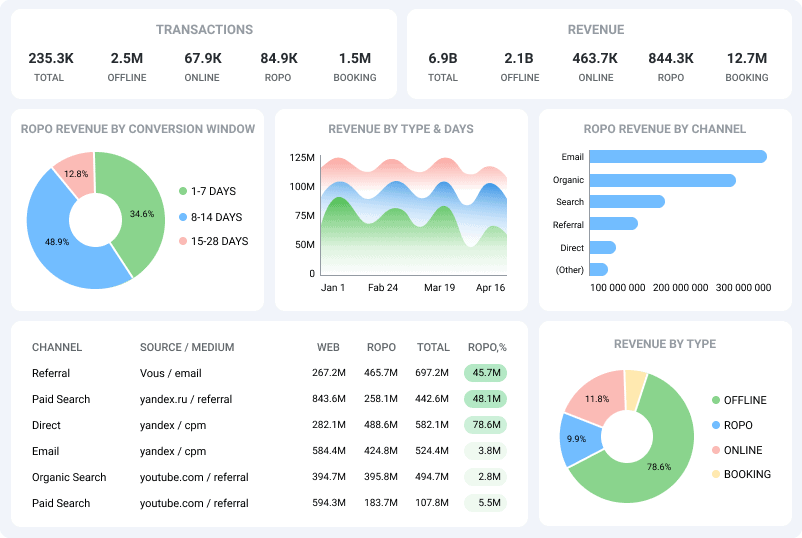
This is a really useful feature because no two eCommerce platforms have the same reporting system. However, Google Analytics has been designed by data experts from the search engine giant and they gather a lot of data in a reliable way that’s easy to read. It’s important to note that not all business owners can decipher these reports, so it’s worth to have an agency or a professional to help you with this matter.
Reports can be:
- Dashboard reports
- Finance reports
- Product analytics reports
- Inventory reports
- Acquisition reports
- Behavior reports
- Marketing reports
10. Promotion and discount functionality
Looking for a way to make your customers feel like they got a good deal? (77% of them say this is exactly what they find when they find a deal online)
Would you like to win every time your in-store customers go showrooming? (A study of 2,400 customers found that 75% of them used their smartphone when shopping in-store, with the goal to check out prices online.).
Do you want to capture 62% of people who specifically search for promoted items online?
Do you want to help your new customers overcome their indecision in most cases?
Promotion is a marketing technique designed to trigger an emotional response in a customer’s mind, prompting them to purchase. They offer the perception of high value and try and pull on your emotions.
Discount codes are a marketing method to promote products by giving access to discounts for potential customers based on certain rules.
11. Multiple payment options
Until a few years ago, most e-commerce companies were only able to offer Credit Cards and Debit Cards as their payment options. But ever since digital wallets were introduced, things have changed quite a lot. Google Pay is the latest popular e-wallet that brands are beginning to adopt, mimicking PayPal.
One reason some people choose to abandon their shopping carts is being unable to use different payment methods at checkout, like cash or credit card.
Now, brands are trying to add popular payment options to their site in order to avoid the situation where customers feel that they have no choice but to abandon an online purchase at the last minute. One company has opted for a more inclusive approach and now offers PayPal, Apple Pay, and Google Pay as alternate payment methods.
We all know how important it is to provide as many payment methods as possible, as it helps with bigger conversions and removes risk. If they’re on the final checkout step and they find out that we only accept credit cards, then we will quickly lose them.
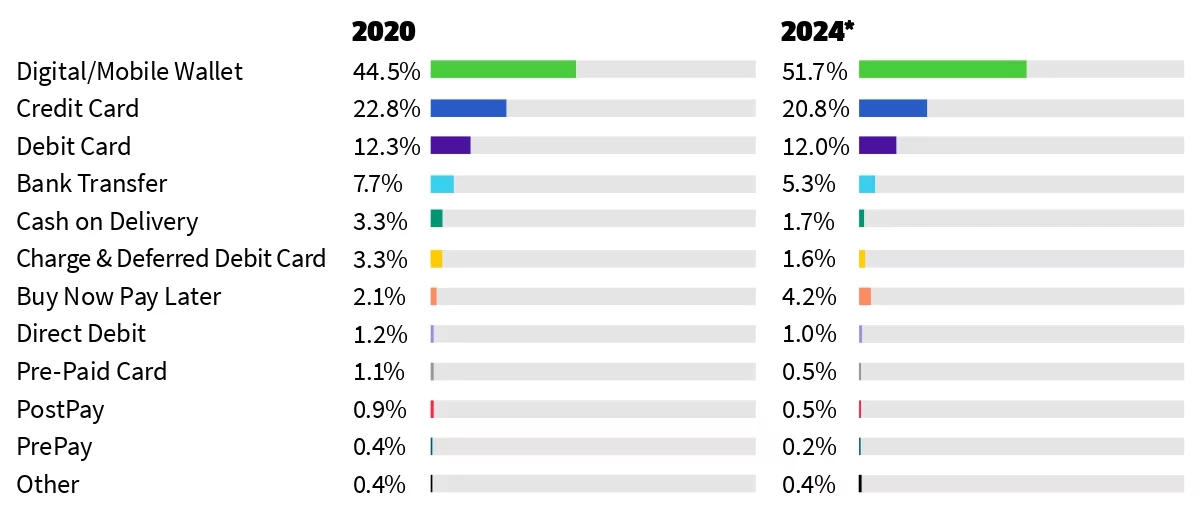
Why should you offer multiple payment options?
If you’re on the verge of making the payment to get something but find out you can’t make it with your desired payment, don’t feel too bad. Think of all the other options you could use! The disappointment could be very strong if you had given up hope and were committed to buying that product. Conversely, you would be happy if you found the payment method that you were looking for or the only available payment method. The consumer behavior is normal in this case.
One of the best ways to increase your conversion rates is to offer customers a variety of payment options, which can have a lot of benefits:
- Increase in the conversion rate
- Lesser abandoned carts
- Customer satisfaction
- Brand credibility
- Hassle-free checkout
The best payment methods for eCommerce sites
- Credit Cards / Debit Cards (Basic)
The most common type of payment you would spot on every eCommerce website would be credit and debit cards. When you want to make a purchase on the app, you’ll need to share some details- like your card number, card’s validity, and CVV. Once this is done, it’ll send an OTP on your mobile number. Once you enter this number in the app, your transaction will be completed.
PayPal is one of the most widely used payment methods with over 305 million users worldwide. As long as your region has plenty of PayPal users, not having it will cause a lot of inconvenience to your customers. However, if you want to reach more customers from other countries or regions, it might not be a good idea because PayPal is not as popular there. By allowing your shoppers to use PayPal for checkout, you can see an increase in conversion rate.
Launched in August 2018, Google Pay already has millions of active users and competes alongside other online payment modes. With the strong brand name and its wide range of features, this app is a great way to complete transactions securely.
Google Pay is a convenient and popular way for customers to purchase goods or services from your store. It rewards both merchants and consumers with cashback, making it a great option.
Stripe’s services are also making it possible to take online payments through your website in just a few steps. Their service is loved by many businesses because of its convenience and simplicity when it comes to taking payments online.
Giving your customers a range of options during checkout is not only good for their wallets, it also improves satisfaction. The more payment options you offer, the more likely it is they’ll be happy with the item they purchase.
12. Customer communication channels
Ensure that you are contactable via the channels that your customers are comfortable with. They’ll be more likely to get in touch with you, which will make it easier for them to get in touch with you!
Must have contact channels that can be used
- Live web chat
- Chatbots
- Messenger apps
- Social media
- Emails
- Web forms (Contact, support, request, … etc.)
- Phone calls
- Video chat
When beginning to rely on one or two of the above channels (e.g. Facebook, Instagram), it’s important to make sure you have contact channels in place in order to effectively reach your audience when you need to. At some point, your online business will require attention and care, and that moment should be considered a priority.
13. Automated backups and recovery
Planning backups for your online store is similar to an insurance policy. You hope you never have to use it, but it’s still worth having it. Though it might seem a bit time-consuming and obsessive, backing up a website is a smart measure that every eCommerce site should take. In the event that something unfortunate were to happen, you’ll be glad that you took this precautionary measure beforehand.
One of the ways an eCommerce website can safeguard and safeguard your data is by creating backups. They ensure that you’ll still be able to recover and restore any files that you might have lost over a certain period of time, no matter how large or small the damage to your eCommerce website is, you can avoid it by backing up its data.
Regardless of how big your loss is, you can deal with it given that you have a proper backup. The below points list steps as follows:
- Backup everything
- Use a cloud backup
- Decide the time of the backup of your eCommerce website
- Test whatever data backup you have made
Nowadays, if you want to protect your eCommerce website from any possible contingencies without worrying about undermining its performance, then backing up its content is the best way. After doing some research and running some tests, you’ll find backing up your files is a much more effective solution. Furthermore, if you’re not considering the forthcoming tips of this post, then you’ll be very grateful.
14. Strong security
Ecommerce sites have always been a popular target for cyberattacks owing to the sensitive data they hold such as private and financial information. No matter what size your business is, a data breach can be costly not only in terms of potential losses but also in terms of loss of customer trust.
Online shopping is becoming more and more popular, but the rise in eCommerce has also resulted in an increase in security threats. This can be frustrating for customers, but there are plenty of tools to keep your business safe online. If your eCommerce security isn’t up to scratch, you’ll be vulnerable to hacks like the one we’ve suffered.
They compromise the all important customer data and you suffer the loss of sales, customers’ trust, and your brand’s reputation.
There has been a significant increase in the frequency and sophistication of cyberattacks. Ecommerce security refers to the measures taken to protect your business and your customers against such threats.
Most types pf eCommerce security threats & issues
- Spam
- Financial Frauds
- Phishing
- Bots
- DDoS Attacks
- Brute Force Attacks
- XSS
- SQL Injections
It is crucial for eCommerce businesses to find ways to provide top-notch security that ensures a safe & smooth customer experience. There are numerous benefits that come along with procuring the best security: customers will be able to shop worry-free, and your reputation may even take a positive turn amongst prospective buyers.” The much better your security protocol is, the much better your brand will uphold its reputation and earn the trust of customers.
Some of the most effective eCommerce security measures
Secure eCommerce stores have a few things in common. They use the latest and best hardware, they don’t use third-party apps or plugins like adobe flash to make sure the store is always safe. Let’s break this down so you can follow these guidelines no matter what type of eCommerce store you have:
- Use of HTTPS instead of regular HTTP
- Start form secure your servers till the admin panels
- Use of the best practice for payment gateway security
- Use firewalls
- Use of antivirus and anti-malware protection software
- Always backup your full data
- Always stay updated
You should be educated on some of the threats that can present themselves in the modern day world of e-commerce. You should know how to protect yourself and prepare for these online threats by becoming aware of these threats.
15. Dynamic shopping cart
Online shopping is growing in popularity and it’s not far-fetched to think that more people will turn to it for their needs in the near future. It provides convenience, is reliable, and can be done quickly by anyone with an internet connection. The shopping cart option allows customers to spend more money on your site, which will likely result in increased revenue, regardless of whether they are used to physical stores or prefer how it looks online.
Dynamic carts use the latest technological advances to create a personalized and interactive online shopping experience for shoppers. These carts are built with a modular framework which makes them easy to customize for individual businesses. This makes it possible to have one cart that works for both brick-and-mortar stores and an ecommerce website. Dynamic shopping carts use AI, machine learning, chatbots, voice recognition, and others.
16. Easy navigation to checkout
A good navigation system on a website can mean the difference between a visitor finding what they need quickly or getting frustrated and leaving the site. A rule of thumb is that you only have a few seconds to grab their attention. You need a navigation system to guide them where they need to go right away.
Even small differences in how visitors navigate your website can significantly impact their ability to locate the products that fit their needs. If visitors can’t figure out what to do or where to go when they get to your site, they will quickly leave and shop elsewhere.
17. SEO friendly
Search Engine Optimization is the act of optimizing your website so that people searching for your products can find it through major search engines like Google. 88% out of all internet traffic starts with a search engine. That means if you can’t get rank, you’re never going to get customers, making SEO important to eCommerce businesses.
18. Third-party API integrations
Third party integrations APIs are used to make managing your business easier. They include features and tools for how you can reach customers, control inventory, handle orders, calculate shipping costs etc.
Along with this, integrating AI writing assistants into the company’s existing systems or software can be of great importance for you and your employees to stay tracked of all that is happening in the company’s online environment. Make sure you have a variety of choices to make.
19. Best practices for (UX) and (UI)
Ecommerce user experience (UX) and user interface (UI) is important for a variety of reasons, but most importantly it dictates your end user’s experience with your website. It is the design and layout and how it feels for someone to browse or shop on your site. There are several best practices that we will cover below that many people overlook. Few of the best practices can be:
- Easy navigation on homepage
- Create a clean, and clear pages
- Improve your online store speed
- Use a clear call to action CTA
- Optimize functionality for UX design
- Mobile friendly UX
- Add proper site search
- Customize user interface UI design
- Simplify checkout process
- Use of HD and HQ images
- Include reviews on product pages
- Offer different payment methods

One of the most important parts of your online store is actually the user experience and user interface. Building a great UX and UI can ensure your customers have a lovely time with you, increasing the likelihood that they’ll make a purchase.
20. Cross-browser compatibility
Web browsers can have a number of different requirements, depending on the browser. Web browsers are made different and has its own specific operations, depending on what you want to use the browser for If you mostly work on a desktop PC, Firefox or Opera may be the best option around. Alternatively, Chrome or Safari make great web browsers for users who prefer using their phone.
Designing web pages that are compatible with all kinds of browsers is one way of making sure that your website will be accessible to everyone.
eCommerce websites can prove to be extra tricky, as often many products will be displayed on these websites and it’s important that the images and product descriptions display correctly on all devices and all browsers to avoid confusion or an ugly, disjointed display on the chosen device. For eCommerce sites to achieve the goal of attracting customers who make a purchase, it’s imperative that products display the way the webmaster and website owner intended.
Ecommerce websites can be more tricky specially with a ton of products can prove difficult to optimize. With so many images and product descriptions, it’s important that they all look good on any device or browser, just in case someone comes along using one of those.
When your site isn’t compatible with a variety of most used and popular browsers, it can lead to lost potential customers and business income and this is really bad for your online business. So, to attract customers who make a purchase, it’s imperative that products display the way the webmaster and website owner intended. Make sure of that.

Final thoughts
In this modern day and age, having a website as an eCommerce site is just as important as it is to have a physical store. However, with the rise of high-quality websites that have been developed for this purpose, it can be quite difficult to make one’s site stand out from the rest. Without a clear vision for its functionality and design, a business will find itself unable to compete in this competitive marketplace.
Also, make sure to have a good navigational design, faster site loading times, high-resolution images and live chats are all features which can increase customer satisfaction and have a great impact on the company’s reputation.
If after all you can’t do it yourself or don’t have the required time, and looking for experts to keep your online shop or business website up-to-date. Hiring us today will enable you to focus on what matters in your business.
More reads:

